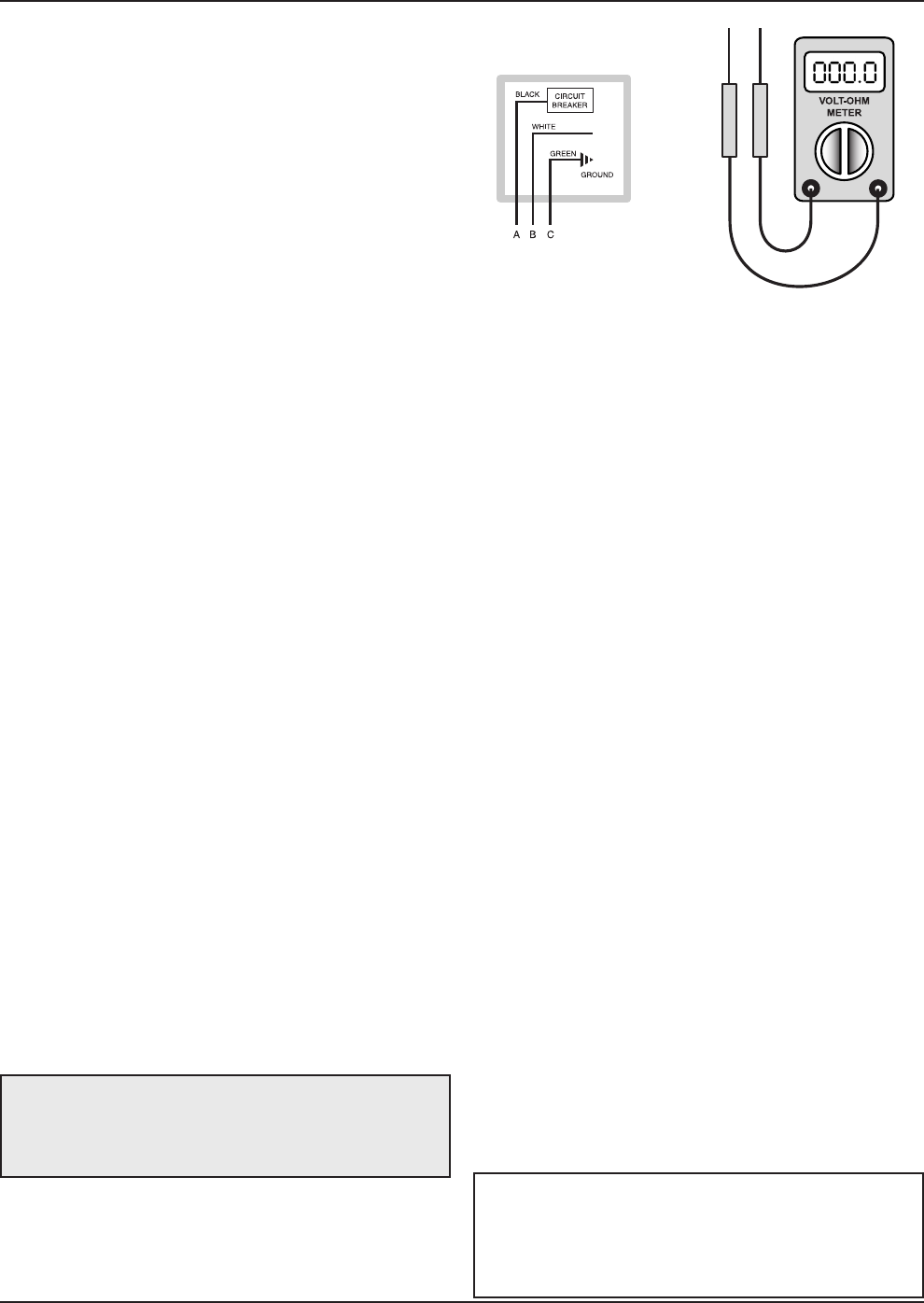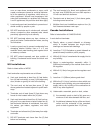
19
Electrical Power Connections
Installations must follow these codes:
· National Electrical Code and any other national,
state, provincial or local codes or regulations hav-
ing jurisdiction
· Safety wiring must be N.E.C. Class 1
· Heater must be electrically grounded as required
by N.E.C.
· In Canada, C22.1
The heater is wired for 120 VAC, 12 AMPS. The volt-
age is indicated on the tie-in leads. Consult the wiring
diagram shipped with the heater in the instruction
packet. The remote tank control stat, thermostat, or
electronic heater control as applicable, may be con-
nected to stage selector terminal (See wiring diagram).
24 Volts are supplied to this connection through the
heater transformer. DO NOT attach line voltage to the
“TH” leads. Before starting the heater check to ensure
proper voltage to the heater and pump.
Install a separate disconnect means for each load.
Use appropriate-sized wire as defined by NEC, CSA
and/or local code. All primary wiring should be 125% of
minimum rating.
It is strongly recommended that all individually-pow-
ered control modules and the heater should be
supplied from the same power source.
Surge Protection
Microprocessor-based and solid state controls are vul-
nerable to damage from voltage and amperage
fluctuations in the power supply. All sensitive control
components should be protected by a suitable com-
mercial-grade surge protection device.
If any of the original wire as supplied with the heater
must be replaced, it must be replaced with 105°C wire
or its equivalent.
Check the Power Source
AC = 108 Volts AC Minimum, 132 Volts AC MAX
AB = 108 Volts AC Minimum, 132 Volts AC MAX
BC = < 1 Volt AC
Making the Electrical Connections
Refer to Fig. 14 Wiring Connection, and the Wiring
Diagram.
1. Verify circuit breaker is properly sized by referring
to heater rating plate. A dedicated circuit breaker
should be provided.
2. Turn off all power to the heater. Verify that power
has been turned off by testing with a volt-ohm
meter prior to working with any electrical connec-
tions or components.
3. Observe proper wire colors while making electrical
connections. Many electronic controls are polarity
sensitive. Components damaged by improper
electrical installation are not covered by warranty.
4. Provide an external surge suppressor capable of
maintaining system integrity.
5. Provide overload protection and a disconnect
means for equipment serviceability as required by
local and state code.
6. Install heater controls, thermostats, or building
management systems in accordance with the
applicable manufacturer’s instructions.
7. Conduit should not be used as the ground. There
must be a solidly wired ground.
Fig. 13: Check Power Source
NOTE: A grounding electrode conductor shall be
used to connect the equipment grounding
conductors, the equipment enclosures, and the
grounded service conductor to the grounding
electrode.
WARNING: Using a volt-ohm meter (VOM), check
the following voltages at the terminal block inside the
unit. Make sure proper polarity is followed and house
ground is proven.


















